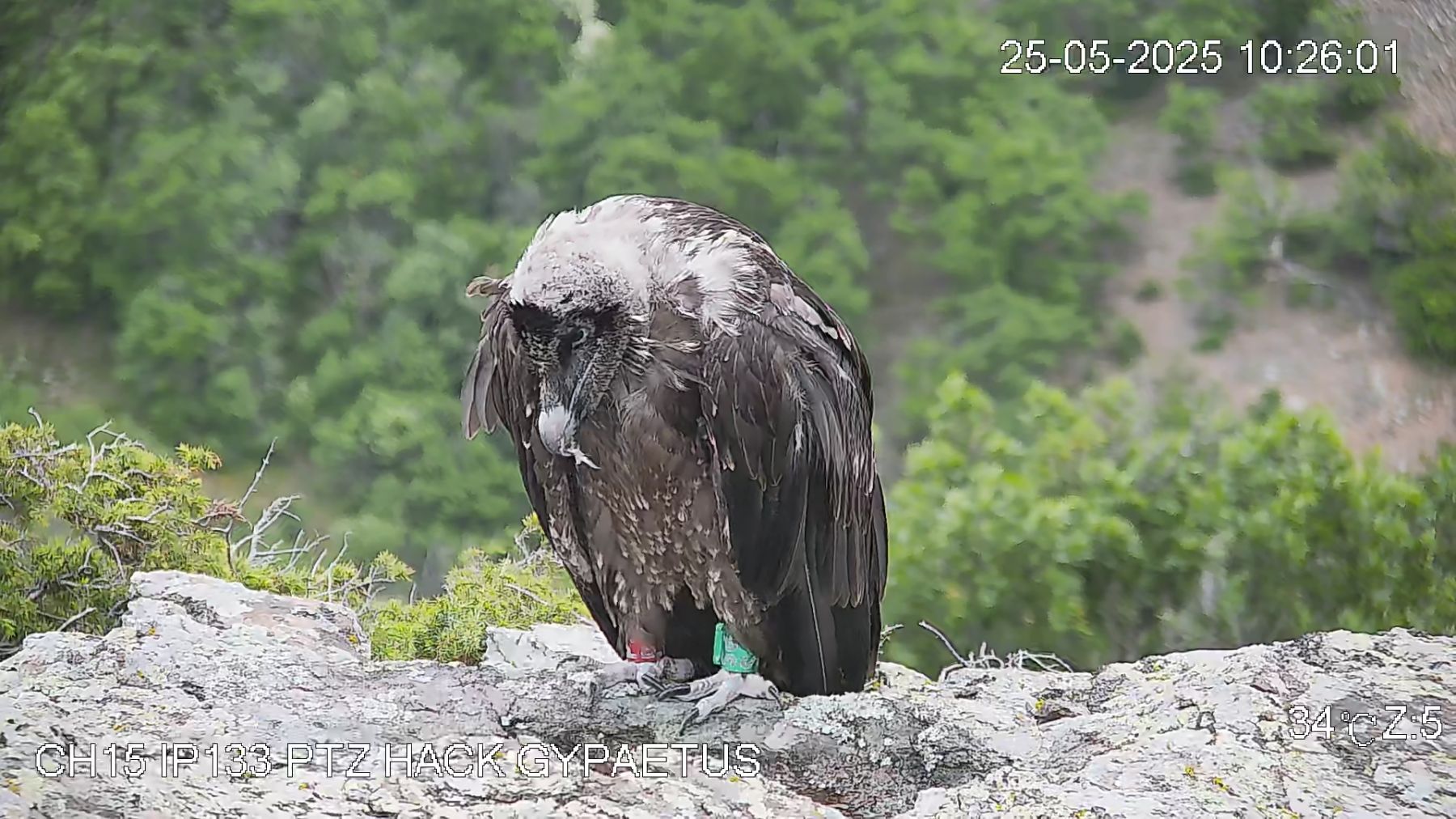
The Bearded Vulture disappeared from much of its range in Europe over the 19th and 20th centuries as a result of the decrease in wild herbivores, changes in farming practices and direct persecution by people. Thankfully, in recent years, reintroduction projects and conservation measures have changed the species’ destiny for the better. This is also the case in Vercors, where a pair recently laid a clutch in the wild for the first time in 150 years!
A promising Bearded Vulture breeding season in Vercors
It seems that two Bearded Vultures pairs have had a busy period in Vercors during this breeding season. Since the beginning of winter, the two pairs settled at the southern part of the Vercors, one in the commune of Laval d’Aix and the other in Châtillon-en-Diois.
For several weeks now, a team from Parc naturel régional du Vercors (PNRV) has been observing the birds transporting branches and copulating. This behaviour indicated that they may be nesting. One of the pairs, Gerlinde and her mysterious partner, already behaved in this way last year but without laying eggs. But this time around, they succeeded.
Pairs lays clutch in Vercors for the first time in over a century
The first pair consists of Pamela and an unidentified male, while the second pair consists of Gerlinde (released in 2013 in the Vercors) and an unidentified bird.
While the behaviour of Pamela’s pair does not yet show signs of egg-laying, Gerlinde’s behaviour is characteristic of successful egg-laying. Since February, both adults carefully look after their clutch, taking turns to incubate and chasing away any crows or eagles that might attack it. This milestone marks an important event for Vercors, but also Auvergne-Rhône-Alpes and France. It is the first time a Bearded Vulture pair has bred in the wild since its reintroduction into the Vercors twelve years ago.
Although the breeding progress appears promising, the path between egg-laying and fledging lasts around six months. The risks of failure are still significant, especially for a young and inexperienced pair.
Reintroducing the Bearded Vulture in Vercors
The reintroduction project has so far released 17 Bearded Vultures between 2010 and 2021. Since 2016, these actions took place within the LIFE GypConnect project.
The birds released in the wild come from a captive breeding background. They hatch in different facilities within the Bearded Vulture Captive Breeding Network, coordinated by us at the Vulture Conservation Foundation (VCF) on behalf of EAZA’s EEP, which breeds the species for conservation purposes.
Once they reach 90-100 days old, the captive-bred birds are ready for their release. Before that, Parc naturel régional du Vercors equips them with identification rings, bleaches a unique set of feathers and fits them with GPS transmitters to be able to recognise them in the wild and track their movements and behaviour. Monitoring is essential to identify and tackle threats, as well as become alert if a bird needs rescuing, helping boost chances of survival.
The LIFE GypConnect team then hikes to the artificial nest and releases at least two Bearded Vultures at a time. In this nest, the young vultures acclimatize to their new environment until they fledge. This method is known as hacking, which is more or less the ‘natural’ way of fledging. The role of the parents at that time is to supply them with food and provide social contact. During this period, a team monitors the birds to ensure their safety and feeds them without human contact until they fledge the nest, therefore, avoiding human imprinting.
Here’s to more years of conservation optimism
The first egg-laying in Vercors is a new step forward, but the road is still long. The next objectives to pursue include the sustainable establishment of several pairs in Vercors and the reduction of threats the species face. As a reminder, the species had completely disappeared from the whole of the Alpine arc due to anthropogenic reasons in 1913, with the last trace in the Vercors dating back to 1870.
It takes time and perseverance to reintroduce and restock Bearded Vulture populations to the wild since they only reproduce when they reach around 8-10 years old, with one chick surviving per year. But with diligence, dedication and collaboration, it is possible for this magnificent bird to make a recovery. Since 1978, together with our partners, we bred 611 chicks in captivity and released 368 young across several European regions. We will continue to do so until Bearded Vulture populations become self-sustaining and healthy!
The LIFE GypConnect project

Led by the League pour la Protection des Oiseaux (LPO), the LIFE GypConnect project aims to establish a breeding population of Bearded Vultures in the Massif Central and Department of the Drôme. Releasing captive-bred Bearded Vultures into the wild at sites such as the Parc Naturel Régional des Grands Causses, Parc Naturel Régional des Baronnies Provençales and Parc Naturel Régional du Vercors will create a core population that will connect the two populations of the species in the Alps and Pyrenees. To facilitate movements between the new population and the Alpine and Pyrenean populations the LIFE GYPCONNECT team is creating a network of supplementary feeding stations, and tackling threats such as poisoning, and collision and electrocution with the electricity infrastructure.




